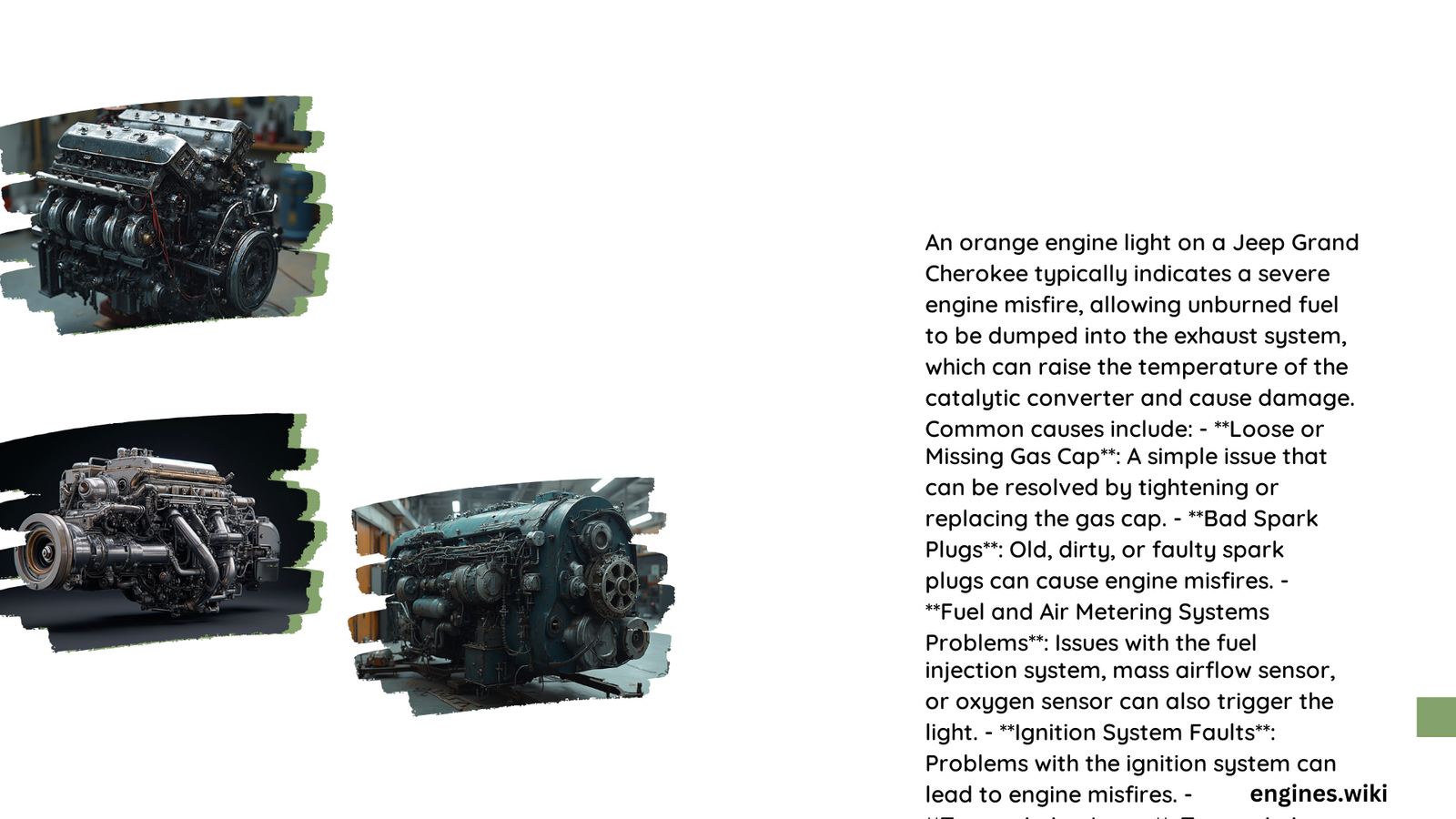The orange engine light on a Jeep Grand Cherokee signals a potential mechanical or electronic system issue that requires immediate attention. This warning indicator can range from minor problems like a loose gas cap to more serious engine complications that might compromise vehicle performance and safety. Understanding the underlying causes and taking prompt action can prevent costly repairs and ensure your Jeep remains in optimal condition.
What Triggers the Orange Engine Light?
Why Do Oxygen Sensors Cause Warning Signals?
Oxygen sensors play a crucial role in monitoring exhaust gases and maintaining optimal fuel efficiency. When these sensors malfunction, they can trigger the orange engine light on your Jeep Grand Cherokee. Here are key insights:
- Sensor Performance Indicators:
- Reduced fuel economy
- Irregular engine performance
- Increased emissions
| Sensor Issue | Potential Impact | Recommended Action |
|---|---|---|
| Faulty O2 Sensor | 15-20% fuel efficiency reduction | Immediate replacement |
| Partial Sensor Failure | Intermittent engine misfires | Professional diagnostic |
| Complete Sensor Breakdown | Potential catalytic converter damage | Urgent repair |
Can Spark Plugs Activate the Warning Light?
Spark plugs are critical components in your Jeep’s ignition system. Worn or damaged spark plugs can directly cause the orange engine light to illuminate:
- Signs of Spark Plug Deterioration:
- Rough engine idling
- Decreased acceleration
- Higher fuel consumption
- Difficulty starting the vehicle
How Do Emissions Control Systems Influence the Light?
Emissions control systems in Jeep Grand Cherokee models are sophisticated networks designed to minimize environmental impact. When these systems detect irregularities, they activate the warning light:
- Catalytic Converter Issues
- Exhaust Gas Recirculation (EGR) Valve Malfunction
- Evaporative Emissions System Leaks
Diagnostic Steps for Resolving the Orange Engine Light

What Should You Do First?
- Check the Gas Cap
- Ensure it’s tightly secured
- Look for visible damage
-
Replace if necessary
-
Use an OBD-II Scanner
- Connect to the vehicle’s diagnostic port
- Read and record error codes
- Interpret specific trouble indicators
When Should You Seek Professional Help?
While some issues can be self-diagnosed, certain scenarios require expert intervention:
- Persistent warning light after basic troubleshooting
- Complex error codes
- Performance-related concerns
- Potential internal engine complications
Prevention and Maintenance Strategies
How Can You Minimize Orange Engine Light Occurrences?
- Regular scheduled maintenance
- Use high-quality fuel
- Replace spark plugs at recommended intervals
- Perform periodic system diagnostics
- Address minor issues promptly
Technical Specifications
Common Error Code Categories:
– P0300 Series: Random/Multiple Cylinder Misfire
– P0171-P0175: Fuel Trim System Variations
– P0420: Catalytic Converter Efficiency Below Threshold
Final Recommendations
The orange engine light on a Jeep Grand Cherokee should never be ignored. While some causes are minor, others can indicate significant mechanical issues. Always prioritize systematic diagnosis and timely intervention to maintain your vehicle’s performance and longevity.
Pro Tips
- Never reset the light without understanding the underlying cause
- Keep maintenance records
- Consider professional diagnostic services for complex issues
Reference:
– Jeep Official Diagnostics
– OBD-II Troubleshooting Guide
– ASE Certified Mechanic Resources
